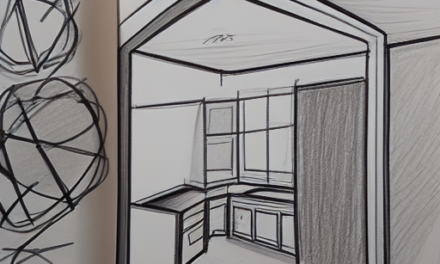When it comes to organization, some of the best tips for work include reducing clutter. You should also keep reference books in a central office library. In addition, you can organize your items in clear bins to eliminate clutter. Keeping a work space free of clutter will make it easier to focus on your tasks.
Reduce clutter
One of the best organization tips for work is to set up a system. Try rearranging your desk to put things where they’re used most often. For example, keep chargers and notebooks at the top, while pens and other supplies should go in the lower drawers. This system can help you be more productive and reduce clutter. Personal items can also be stored off your desk.
One of the most common sources of clutter is paper. Instead of stacking your papers on the floor, make separate piles for trash, important documents, and urgent paperwork. This system will keep your desk clutter-free, while still providing convenient storage. You can also go paperless by scanning important documents to create electronic copies.
Clutter signals to your brain that you need more work and triggers a stress response. Being organized reduces stress and gives you a sense of control. You will be more efficient if you can find items quickly. For example, if you are constantly searching for files, you’ll waste valuable time and be less effective. Additionally, clutter can negatively impact your job prospects. Having a well-organized workstation can help you land a promotion.
In the office, decluttering your workspace can help you stay focused on your work. If you’re not able to find what you need, you might end up losing meeting notes or project plans. Try decluttering the items you use daily to make it easier to find what you need.
Organize reference books in a centrally located office library
If your office library contains a significant number of reference books, organizing them in a central location is crucial to ensuring that your employees can quickly find what they need. Fortunately, there are many ways to organize reference books. One simple way is to organize your books by subject. You can organize your books using author, subject, and title categories. You can also organize them according to shelf order.
Another way to organize your reference books is to assign a number to each book in your library. This will make it easier for readers to find them and make them more accessible. This type of arrangement is especially helpful in the stack room. You can place a stack room guide at the entrance so that users can quickly find the book they need. You can also organize them by classification number to make finding them easier. In addition to this, regular shelf rectification is important. Finally, make sure your library catalog has different approaches to educating users about each book in your library. For example, you should include analytical entries for composite books in your library catalog.
Organize items in transparent bins to reduce clutter
Organizing items in transparent bins is a good way to cut down on the amount of clutter in your work space. You can easily see what you’ve got and you won’t have to dig through a ton of papers to find what you need. This method is also a good way to keep track of your supplies. It is important to prioritize where you place things based on their importance. The most commonly used items should be kept in easy-to-access places, and those that are less frequently used should be stored in a more difficult-to-access location.
Office clutter can quickly accumulate if you don’t organize your space properly. An unorganized workspace can be distracting, make it hard to find something you need, and make it hard to clear your head. Organizing items in transparent bins and boxes is a great way to make your workspace less cluttered and more functional.
Organize your workspace
When it comes to organizing your workspace, you have a few options. You can follow the advice of others, which can be a good idea if you’re unsure about the method you should follow. However, following someone else’s advice does not necessarily ensure success – you need to try what works for you.
When organizing your workspace, consider the tasks that you perform most frequently. Consider placing an extra charger or change cup near your work area, and an inbox for mail and paperwork. You can also use a monitor-mounted document clip to keep paperwork handy. In addition, you can use an L-shaped desk for easier access to your paperwork.
Keeping your workspace organized can give you more time and increase your productivity. Keeping things neat and orderly will also leave a good impression on your visitors and create a peaceful working atmosphere. You can also purchase an attractive frame to hang your documents. These simple methods will help you organize your workspace and save you from time-consuming searches.
Apart from enhancing your efficiency, an organized workspace will also help you to improve your mental health. Working in a disorganized space will only make you feel stressed and overwhelmed, so it’s important to make sure you keep it clean and organized.
Create a filing system
One of the best ways to keep track of your work and personal files is by creating a filing system. A good system should be easy to access. Make sure that your files are stored close to your desk or department so that you can find them easily. If possible, separate files into categories so that you can quickly find specific items. Having a filing system in place will also make it easier for you to train your team to follow the system. Once you have a system in place, try to make a time each week or month to go through it.
First, choose a filing cabinet that you like. Pick one that suits your personality. You can also try using banker’s boxes to organize your files. Once you’ve chosen your filing cabinet, practice using it for a few months to make sure it works for you. Another important part of your system is hanging folders. Choose one folder for each topic, and then file relevant documents into that folder.
You should also label every file. Labels should be legible and consistent. For example, when dealing with files that belong to clients, you should include the word “The” in the label. You can also use different colors for different types of folders to make them more visible.
Set up a schedule
If you’re a business owner, one of the first steps to creating a work schedule is to determine the requirements of your team. This will determine the format of the schedule, which will vary based on the type of work your team does. For example, rotating shifts may require a different format than standard 9-to-5 coverage. In addition, you must consider the company’s policies regarding work schedules. This means that you should consult with your legal or human resources team before creating a schedule.
When establishing a schedule, be sure to notify employees a few days or even a week in advance of the changes. This will allow employees enough time to make other arrangements and determine what days are most convenient. However, it’s important to note that different employees need different amounts of advance notice. You should discuss these options with your employees to determine how much advance notice is best. Additionally, you should post the schedule on the same day each week to ensure that your employees are aware of it.
During the scheduling process, consider your employees’ strengths and weaknesses. For instance, if you’re a restaurant manager, it’s important to schedule your more efficient employees first. This way, you’ll be able to make sure that you’re not scheduling your less efficient employees with more human interaction.












